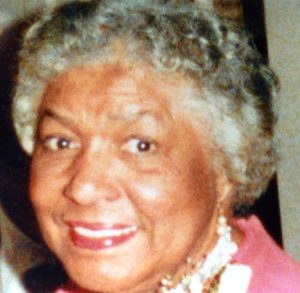Human history is preserved in books. Time unfolds history while we record it and refold it into pages of paper, bound in books and set upon a timeless shelf – row after row, an endless flow of a story unchangeable.
In everyone, in everything, in every place there is a unique history as individual as every tiny seed the source forms and scatters. In the ground, the roots form the foundation of the immutable start of another story in our communal history – each story, a tree. As if all trees comprised one epic forest, so does each story – told and untold –comprise our one collective chronicle.
Rochester is one of those towns whose identity is rooted deeply in its past – a past that is sustained and stands like a mighty elm, slow-growing upwards as linear as the time that passes by it. Here, time has left many things untouched. And that’s how the people here like it. And if histories can be like figurative trees, perhaps trees can be literal history.
Rochester is a tree ‘city,’ and it’s self-evident in nature. Rochester doesn’t need the Arbor Day Foundation to designate it a “Tree City USA,” although it has now – for three consecutive years – as interest in Rochester’s trees is revived, especially for its older, taller, most prominent trees. The trees with a story, trees where something ‘happened,’ where life happened. Trees still standing and trees that live only in memory.
As human beings go, Matthew Monteiro is relatively young. Too young to remember the days when America’s elegant elms made grand avenues out of mere roads and dotted the landscape before Dutch elm disease in the 1930s triggered its demise, but old enough to undertake the responsibility as a caretaker of sorts of not only the preservation of Rochester’s tree history, but also of Rochester’s tree future.
A small group of Rochesterites joined Monteiro on Monday night inside the Plumb Library. They mostly listened to Monteiro give an overview of the town’s involvement since 2015 as an Arbor Day Foundation Tree City USA and what that entails for Rochester and its trees. But they also indulged in whatever tree history Monteiro could uncover through research to share with the group. Any other gaps in the tree history of Rochester not preserved on pages were filled in by individual memories and anecdotes.
“I have an interest in trees, obviously,” said Monteiro, who replaced former Town Administrator Michael McCue as Rochester’s Tree City USA representative.
McCue, who once expressed his surprise that Rochester in its rural splendor was not yet an official ‘Tree City USA,’ sought Tree City USA status for Rochester in 2015. As part of the town’s involvement with the Arbor Day Foundation, the town must regularly engage in activities that benefit trees – promoting tree planting, educating the public on caring for trees, and encouraging an appreciation of them. For Monteiro, delving into the history of his town’s trees is a worthwhile endeavor that not only satisfies the requirements as a Tree City USA, but also satisfies the soul of a dendrophile.
“What counts as a historic tree?” Monteiro asked. The obvious answer is an older tree, and usually a bigger tree. “But it doesn’t have to be that. It could be a unique tree, or maybe it’s the only Pawpaw tree in town.… It could be a rare endangered species, or it could be a tree that has significance to the town.” It could even be a plain pine tree in front of Town Hall, mundane for the majority of months but then lit up every year during the holidays.
“Any of these could be historic in their own way,” said Monteiro, “Or of some important event that happened in the past by a tree that’s still living,” like the Liberty Tree in Boston that served as a rallying point for the revolution (until British loyalists fell it in 1775).
Around 2000, the town established the Greenways Committee, now fused into the Rochester Land Trust.
The Greenways Committee engaged in many tree-centric undertakings including the planting of memorial trees and establishing a tree nursery on Dexter Lane. But pointing out the “big trees of Rochester,” preserving them, and documenting their history was an initiative for the Greenways Committee.
Apparently there has always been a bit of tree envy in Rochester and an underlying competitive tendency bordering on feud between neighbors over whose sycamore tree was bigger.
In a review conducted by Greenways, in which residents were encouraged to nominate candidates and measured by Greenways members, the winner in Rochester for biggest tree is a massive white oak on Alley Road, owned by the Kennefick family, who celebrated many of their family events underneath its towering outstretched branches. According to recorded history, the tree once stood in a field, providing shade to the people and their animals. Of course, houses now surround the tree.
Tommy Gayoski’s giant hemlock in his woods off Burgess Avenue shared part of its history with his family. Gayoski used to climb it as a boy and look out all the way to Snipatuit in one direction, and across his family fields.
A sycamore tree on Snipatuit Road was deemed the third largest tree and served as the main selling point for Anne Parent when she bought the property in the early 1950s. According to Greenways, “When she entered the tree [in the Greenways contest], she also mentioned that her tree was larger than Helena Brown’s (nothing like a little cross town rivalry).”
The Clarks entered several trees on their property, a part of Eastover Farms, planted by the Hiller family, and noted one tall white pine in particular that has hosted several weddings over the years.
Of the 16 historic trees entered, the most amazing thing, says a Greenways written report, “was the connection that each tree had with its current owner, none of whom had been the original planters of the trees.”
“This is a part of the history of our town, even if the tree’s not there anymore,” said Monteiro.
The group reminisced about beloved trees from childhood, so large that one could hide in the bends of their branches or in the massive buttress roots that transcended the underground.
In 2017, Rochester became the home to a very young but nonetheless historic tree – the sapling of a Hiroshima gingko biloba donated by McCue and planted in the Dexter Lane ball field in honor of Arbor Day. Monteiro is now entrusted with its care to ensure that the historic tree will one day become another of Rochester’s big trees.
“We’re so lucky,” said Laurene Gerrior, Rochester resident, naturist, and serving member of the Conservation Commission. “We are surrounded by trees. The pine trees, they’re iconic to us. A pine tree is Rochester.”
And so, as trees stand through the duration of time, outliving many of us and sometimes generations of us, a tree, too, is a transient being. It is born, it grows, it lives, and then it dies. But never without a story, never without joining history’s unfolding, no matter if its form is the papery pages into which history is folded, or if it falls and folds back into the earth – the place where the story started and where its many seeds will unfold it again.
By Jean Perry

